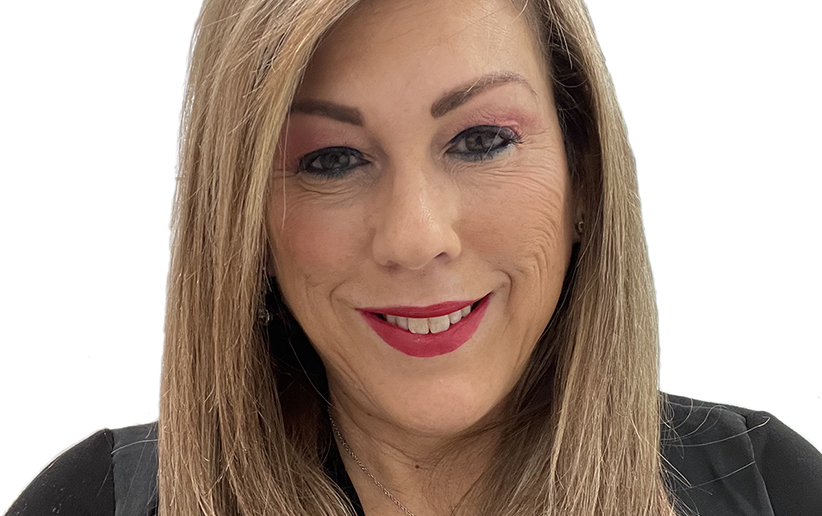
Why am I writing this now, as President of AAMFT, at this point in time? Because as I reflect on our recent victory of obtaining Medicare inclusion as MFTs in December 2022, I am also aware of the “necessary losses,” or changes, that have occurred at AAMFT over the decades that have led us to this triumphant moment. Though I have not been around AAMFT since its beginning, I have been around since I was a student member in 1986, before “clinical membership” was automatically obtained with an LMFT (it has now recently been decoupled from the LMFT to allow for inclusion of qualified, systemically-trained clinicians from other disciplines). Since my involvement in the 90s in leadership (first as a Division leader), AAMFT has been on a successful quest of association best practices in furtherance of AAMFT’s primary mission to “promote and protect the profession.”
Along this lengthy path to achieve parity and recognition as a distinct discipline, there have been many victories, such as being included as one of the five core mental health disciplines (1992); obtaining licensure in all 50 US states in 2009; inclusion as providers in the Veterans Affairs Administration healthcare system (2006); awarded the funding to establish the Minority Fellowship Program (2007); the numerous achievements, past and ongoing, across the states to include LMFTs in third party reimbursement, school systems, and governmental programs; and finally the last remaining bastion of parity, inclusion in the federal Medicare program.
I wanted to take this opportunity to give thanks and credit to the previous Boards, led by the Presidents (see below), that worked hard to make tough decisions in order to keep us focused both on the activities necessary to achieve our primary mission, while ensuring that the Association continues to grow as a business enterprise in order to be entrusted with carrying forth this mission for future generations of MFTs and the communities we serve:
|
1945-1946 – Ernest Groves 1946-1947 – Bernard Wortis 1947-1950 – Abraham Stone 1950-1952 – Robert Laidlaw 1952-1954 – Emily Mudd 1954-1956 – Lewis Sharp 1956-1958 – Lester Dearborn 1958-1960 – Lawrence Crawley 1960-1962 – Robert A. Harper 1962-1962 – Sophie Kleegman 1962- 1965 – Aaron Rutledge 1965-1966 – Ethel Nash 1966-1967 – Gerald Leslie 1967-1968 – James Peterson 1968-1969 – Gerhard Neubeck 1969-1970 – Wardell Pomeroy 1970-1971 – Thomas McGinnis 1971-1972 – Laura Singer-Magdoff 1972-1973 – Richard Hey 1973-1974 – Clark E. Vincent 1975-1976 – John W. Hudson 1977-1978 – Fred Humphrey |
1979-1980 – Donald Williamson 1981-1982 – William Nichols 1983-1984 – Thomas E. Clark 1985-1986 – Craig Everett 1987-1988 – Robert Beavers 1989-1990 – Ralph Earle 1991-1992 – Donald Bardill 1993-1994 – Anna Beth Benningfield 1995-1996 – Marcia Lasswell 1997-1998 – Anthony Jurich 1999-2000 – Anna Beth Benningfield 2001-2002 – James Morris 2003-2004 – Mary Hotvedt 2005-2006 – Alan Hovestadt 2007-2008 – Scott Johnson 2009-2010 – Linda Schwallie 2011-2012- Linda Metcalf 2013-2014 – Michael Chafin 2015-2016 – Marvarene Oliver 2017-2018 – Christopher Habben 2019-2020 – Timothy Dwyer 2021-2022 – Shelley Hanson |
AAMFT has gone through many changes in order to not only adapt, but preferably predict the consequences from the natural socioeconomic/political evolutionary forces in society. We went through the difficult but necessary restructuring from the former Divisional structure to forming Interest Networks to increase more relevant and viable member participation and sustainability (2018); AAMFT restructured its pathway to membership and categories in order to provide for inclusion of qualified, systemically trained clinicians worldwide (2021); pivoted its programming during the pandemic (saying goodbye to its usual and customary programming of in-person events) resulting in virtual conferences and programming which has increased its reach and educational/networking offerings to more members both in the US and abroad (2020); and selling of the AAMFT building in Old Town Alexandria, Virginia, in December 2022 and shifting to a remote working structure for staff.
These decisions can sometimes seem to come at a cost, felt or experienced at an emotional level—as the relational beings we are, if nothing else! As the President of the AAMFT Board of Directors, I want to assure you that as a business, the Board operates on the level of “opportunity cost” when tough decisions need to be deliberated and made: the opportunity cost of a choice is the value of the best alternative forgone where, given limited resources, a choice needs to be made between several mutually exclusive alternatives (Wikipedia). This doesn’t mean, of course, that we do not also operate as systems thinkers to consider the personal and professional impacts on our members, and we do our best to inform, prepare, and support one another through times of change and transition.
Indeed, now that we have achieved this critical milestone of MFT Medicare inclusion (we still have A LOT of work to do to operationalize this systemically across institutions!), there will be new challenges and “opportunity costs” as the AAMFT Board of Directors carefully considers AAMFT’s future direction, especially during these quickly evolving post-COVID pandemic (or endemic) times as they are currently affecting our practice patterns and service delivery options/locations. If you haven’t read AAMFT’s Workforce Study which highlights what is occurring in the work lives among MFT providers since the pandemic started, you can access it here. More practitioners are practicing across geographical regions, making licensure in more than one state desirable. AAMFT is investing in licensure portability studies in order to ascertain the best, fiscally responsible path to expand service delivery for members. Money invested in any one important direction means evaluating other costs and programs that have outgrown their strategic importance—once again, we revisit the idea of “necessary losses.”
Gaining recognition as Medicare providers is wonderful! But it also increases our exposure and one could say vulnerability as other licensed professions may want to once again limit our scope of practice or relegate us to a specialty in order to preserve or obtain market share. Now, more than ever, the AAMFT Board of Directors and AAMFT staff are committed to staying vigilant and focused on our primary responsibility of “promoting and protecting” our profession. Thank you for all that you do as a member and/or leader of our beloved Association!
Other articles
Common Misconceptions About Portability
Easy licensure portability—it is something everyone in a licensed profession wants, but it is not always easily understood. And as AAMFT embarks on a strategic effort to expand licensure portability for the MFT profession, it has never been more important to understand this process and to correct misconceptions that often circulate about it.
An Unstoppable Teenage Life Force: Face to Face with a Class of Syrian 7th Graders
Several years ago, while I was working on a project in Lebanon, I came face to face with a class of Syrian 7th graders. The 7th graders had been displaced to Lebanon by the war taking place across the border. I had been brought to the school, and the nearby refugee camp where the Syrian children lived with their families, as a consultant family therapy “SME” – a “subject matter expert.”
Laurie L. Charlés, PhD
Trauma-informed Family Therapy: Systemic Treatment of Trauma of Child Refugees
Although children account for just 30% of the world’s population, they account for 41% percent of all those who have been forcibly displaced (United Nations Children’s Fund; UNICEF, 2022). In a number that is difficult to fathom, nearly 34.15 million children were forced to leave their homes and countries due to human rights violations (United Nations High Council for Refugees; UNHCR, 2021).
Charity Somo, PhD and Laurie L. Charlés, PhD
